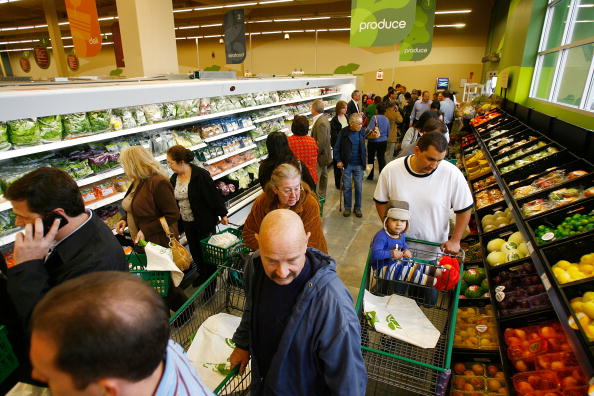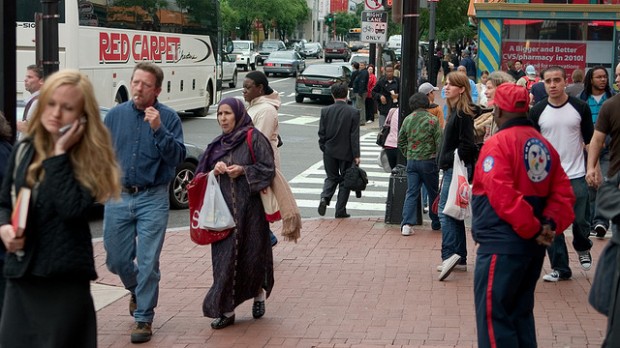
Elahe Izadi / DCentric
The Payton family tours its new home.
Tyisha and Antonio Payton were looking for a new home, something more spacious to accommodate their family than the two-bedroom, affordable housing apartment in Barry Farm they lived in.
Antonio Payton said he didn’t want to speak disparagingly of Barry Farm since “they housed us,” but said their former apartment was too small for his family. The appliances and apartment were outdated. And it didn’t feel like a safe environment where he could raise his three daughters.
On Tuesday, the family entered its new home at Matthews Memorial Terrace, a new $22 million, 99-unit affordable apartment complex built upon church land.
“This is a nice, secure building. It’s a whole different mindset,” Antonio Payton said. “I feel at peace here.”
It’s a unique project, built on land donated by Matthews Memorial Church at 2626 Martin Luther King Jr Ave, SE.
“This part of the city, and I live east of the river, has historically been ignored. It’s time for that to change, and it’s going to change because of developments like this,” Mayor Vincent Gray said at the Tuesday dedication of the building. “This development has been built with sensitivity to this community.”
The dedication ceremony was quite the celebration. It kicked off with a gospel choir, included some choked-back tears and plenty of praise and thanksgiving.
It’s been 28 years since the congregation first dreamed up the idea to use the land for housing. Bishop C. Matthew Hudson Jr., who took the helm of the church in 2006, said the project was a priority of his. The original intent was to provide seniors with homes near the church. He said “suburban flight” has taken many of his older congregants out of the community over the past few decades. “The church was preparing for that,” he said.
Continue reading →













